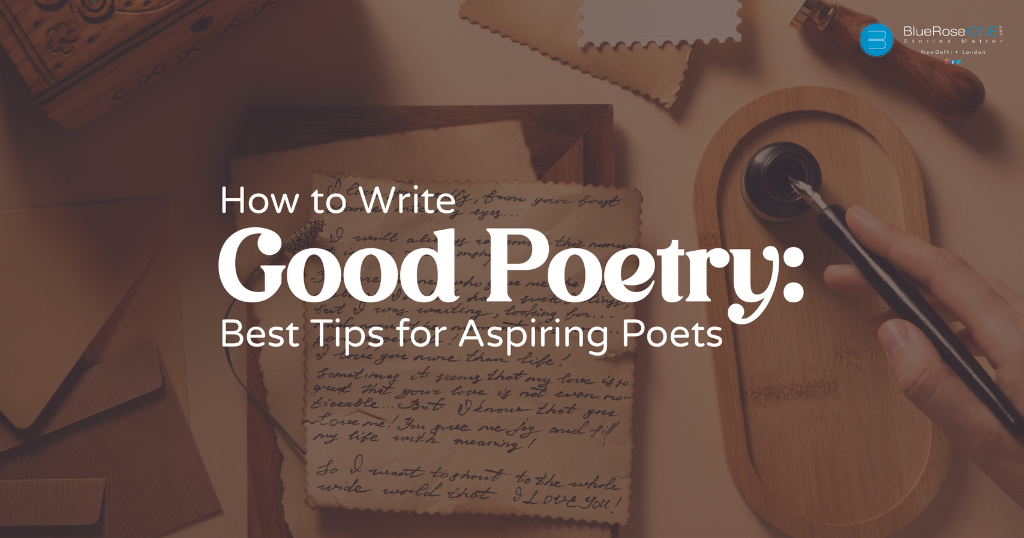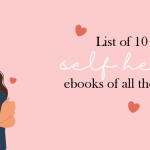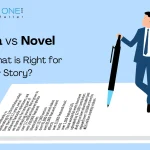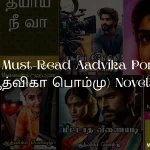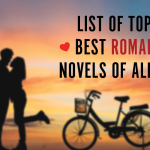Poetry is a strong form of self-expression as well as an engaging means of communicating emotions, tales, and ideas. Crafting good poetry can be an enormously satisfying experience, whether you’re an aspiring poet or simply someone who wants to dip their toes into the world of rhyme.
Read: A Complete Guide on How to Make Your Book an International Bestseller.
This blog will go through vital ideas and insights for writing appealing and memorable poems. We’ll also discuss what constitutes a “good” poetry and share some of the finest poems ever written.
Let’s Understand What Makes a Good Poem.
Poetry is a profound and powerful kind of art that has the capacity to influence people, to change their perspective on the world, and to elicit a broad variety of emotions. It is a meticulously woven tapestry of emotions, visuals, and distinct viewpoints that may make a lasting impression on its readers. In this investigation of what constitutes a good poem, we will dig into the main characteristics that distinguish great poems and support these findings with examples to demonstrate their significance.
Emotional Depth: The Heartbeat of Poetry
Poetry’s heartbeat is emotional depth. A excellent poetry delves deeply into the human experience, eliciting real and authentic emotions in readers. It invites people to experience the poems’ passion, grief, pleasure, or sadness. Consider the following example from Maya Angelou’s poem, “Caged Bird”:
“But a caged bird stands on the grave of dreams his shadow shouts on a nightmare scream his wings are clipped and his feet are tied so he opens his throat to sing.”
In these lines, Angelou vividly portrays the emotional depth of the caged bird’s experience, capturing the reader’s empathy and imagination. The raw emotions of confinement and longing are palpable, making it a powerful and emotionally resonant poem.
You may also like: Amazon Ads for Authors: A Step-by-Step Guide to Boosting Book Sales
Imagery: Painting Pictures with Words
Poets use imagery like a paintbrush to create masterpieces, painting vivid pictures in the imaginations of their readers. Evocative imagery is used in good poetry to transport the audience into the environment being represented. The use of appropriate imagery not only makes the poetry memorable, but it also enhances the reader’s experience. Let’s look at a stanza from William Wordsworth’s “I Wandered Lonely as a Cloud”:
“Continuous as the stars that shine And twinkle on the milky way, They stretched in never-ending line Along the margin of a bay.”
Wordsworth’s use of simile and metaphor helps readers visualize the daffodils as a shimmering, endless sea of golden stars. This imagery turns a simple scene into a vivid and enchanting landscape in the reader’s mind, making the poem come alive.
Unique Perspective: Seeing the Familiar Anew
A good poem offers a fresh viewpoint or unique insight into a familiar topic. It encourages readers to see the world differently and challenges their preconceptions. A perfect example of this is Emily Dickinson’s poem, “Because I could not stop for Death”:
“Because I could not stop for Death – He kindly stopped for me – The Carriage held but just Ourselves – And Immortality.”
Dickinson’s exploration of death as a gentle and courteous guide is a unique perspective that defies the conventional portrayal of death as a grim and fearsome force. This poem prompts readers to contemplate the concept of mortality from a fresh and thought-provoking angle.
You may also like: How to Publish a Book? | Publish Your Book | BlueRoseOne
Unity of Form and Content: The Symphony of Poetry
A excellent poetry typically achieves a seamless unity of form and substance, in addition to the three qualities described above. This means that the form of a poem, as well as the poetic techniques used, should be in sync with its content and emotional depth. Consider T.S. Eliot’s “The Love Song of J. Alfred Prufrock”:
“Let us go then, you and I, When the evening is spread out against the sky Like a patient etherized upon a table.”
Eliot’s use of the metaphor “like a patient etherized upon a table” not only creates vivid imagery but also mirrors the numbness and paralysis of the speaker’s emotional state. The form and content work together to enhance the poem’s impact, creating a powerful and unified artistic expression.
Sound and Rhythm: The Music of Language
While rhyme and rhythm aren’t the sole determinants of a poem’s quality, they play significant role in creating the musicality of language. Sound and rhythm can elevate a poem’s emotional impact and contribute to its memorability. An example of this can be found in Robert Frost’s “Stopping by Woods on a Snowy Evening”:
“Whose woods these are I think I know. His house is in the village though; He will not see me stopping here To watch his woods fill up with snow.”
Frost’s use of rhyme and meter not only imparts a musical quality to the poem but also mirrors the sense of quiet and stillness in the winter landscape. The sound and rhythm of the poem enhance its overall beauty and resonance.
Simplicity and Clarity: The Power of Conciseness
While the use of complex and abstract language can have its place in poetry, simplicity and clarity are equally powerful. Good poems often distill complex emotions and ideas into clear and concise language that is easily understood. Take Langston Hughes’ “The Negro Speaks of Rivers” as an example:
“I’ve known rivers: I’ve known rivers ancient as the world and older than the flow of human blood in human veins.”
Hughes communicates a profound sense of history and heritage with simple language. The clarity and directness of his words make the poem accessible to a wide audience while maintaining its emotional depth.
Here’s a list of Best Tips on How to Write a Great Poem
Now, let’s dive into practical tips for crafting excellent poetr
- Find Your Inspiration: Great poems often begin with a spark of inspiration. It could be a personal experience, a beautiful sunset, a historical event, or even a line from another poem. Keep an inspiration journal to capture these moments.
- Choose Your Form: Poetry comes in various forms, from sonnets and haikus to free verse. Select a form that suits your message and style. Don’t be afraid to experiment with different forms.
- Word Selection: The right choice of words is crucial. Use precise, evocative language to convey your message. Avoid clichés and consider the connotations of each word.
- Structure and Rhyme: Pay attention to the structure of your poem. Does it rhyme? Is there a consistent meter? Structure can enhance the impact of your poem, but don’t feel confined by it. Free-verse poetry can be equally powerful.
- Editing and Revision: Writing is rewriting. After your initial draft, revise and edit your poem. Polish the language, refine the imagery, and make sure every word serves a purpose.
The Best Blank Verse Poems Ever Written
“Blank verse” refers to unrhymed lines of poetry, typically in iambic pentameter, and it has been a popular form in English literature. Selecting the “best” blank verse poems is subjective, as it depends on individual taste and preference. However, here are five notable blank verse poems that have made a significant impact on English literature:
- “Paradise Lost” by John Milton (1667): Often considered one of the greatest epics in the English language, “Paradise Lost” is a monumental work that explores the Fall of Man, God, Satan, and other theological themes. It is written entirely in blank verse and is known for its grandeur and complexity.
- “Hamlet” by William Shakespeare (c. 1600): Although not an entire poem, Shakespeare’s play “Hamlet” contains numerous soliloquies and speeches written in blank verse. The “To be or not to be” soliloquy is one of the most famous examples of blank verse in the English language.
- “Paradise Regained” by John Milton (1671): This work by Milton is the sequel to “Paradise Lost.” It also uses blank verse and explores the theme of the temptation of Christ in the wilderness.
- “Prometheus Unbound” by Percy Bysshe Shelley (1820): In this lyrical drama, Shelley employs blank verse to create a visionary and philosophical work. It is a reimagining of the Greek myth of Prometheus and is known for its lyrical beauty and political undertones.
- “The Prelude” by William Wordsworth (posthumously published in 1850): This autobiographical poem is a significant work of English Romanticism and is composed in blank verse. It offers a profound exploration of the development of the poet’s mind and his relationship with nature.
The Best Rhyming Verse Poems Ever Written
Rhyming verse poems are structured by rhyme, where specific sounds in the words at the ends of lines correspond. Common rhyme schemes include AABB (where the first and second lines rhyme and the third and fourth lines rhyme), ABAB, and more. Rhyming verse adds musicality and rhythm to poetry, making it easier to remember and recite. Here are five notable rhyming verse poems that have made a significant impact on English literature and have been celebrated for their poetic excellence:
- “The Divine Comedy” by Dante Alighieri (c. 1308–1320): Dante’s epic masterpiece is written in terza rima, a complex form of interlocking tercets (three-line stanzas) with an intricate rhyme scheme. It explores the poet’s journey through Hell, Purgatory, and Paradise and is renowned for its lyrical and philosophical depth.
- “The Canterbury Tales” by Geoffrey Chaucer (c. 1387–1400): This collection of stories in rhyming couplets, written in Middle English, provides a vivid snapshot of mediaeval English society. Chaucer’s skillful use of rhyme and metre is a defining feature of this work.
- “The Raven” by Edgar Allan Poe (1845): Poe’s haunting and melancholic poem is known for its eerie atmosphere and repetitive rhymes, particularly the refrain “Nevermore.” It remains one of the most famous and frequently recited poems in American literature.
- “The Waste Land” by T.S. Eliot (1922): This modernist masterpiece uses various forms of rhyme and metre to create a fragmented and multi-layered exploration of post-World War I disillusionment. Its complexity and rich use of rhyme contribute to its status as a seminal work of 20th-century poetry.
- “The Road Not Taken” by Robert Frost (1916): This well-known poem is written in rhyming quatrains and explores the idea of choices and the paths we take in life. It is celebrated for its reflective and thought-provoking content as well as its accessible rhyme and metre.
You may also read: The 14 Most Popular Types of Fiction to Write
The Best Free Verse Poems Ever Written
Free verse is a form of poetry that does not adhere to a specific rhyme scheme, metre, or structure, allowing for greater flexibility and creative expression. Identifying the “best” free verse poems is subjective, but here are five influential and celebrated free verse poems that have left a significant mark on the world of poetry:
- “The Waste Land” by T.S. Eliot (1922): While “The Waste Land” was mentioned in the previous answer for its modernist significance in rhyming verse, it also contains sections of free verse. Eliot’s use of free verse in the poem contributes to its fragmented and experimental nature.
- “Song of Myself” by Walt Whitman (from “Leaves of Grass,” 1855): Walt Whitman is often considered a pioneer of free verse. “Song of Myself” is a celebratory and expansive poem that reflects the interconnectedness of all life and embodies the American spirit. Its use of free verse is emblematic of Whitman’s unique style.
- “The Red Wheelbarrow” by William Carlos Williams (1923): This short and minimalist poem by Williams is a classic example of imagist poetry. It consists of a single, simple sentence broken into free verse lines, showcasing the power of concise and evocative language.
- “The Love Song of J. Alfred Prufrock” by T.S. Eliot (1915): This modernist masterpiece blends elements of both free verse and traditional meter. It explores the inner thoughts and insecurities of its protagonist, J. Alfred Prufrock, using free verse to create a fragmented and introspective style.
- “The Idea of Order at Key West” by Wallace Stevens (1934): Wallace Stevens is known for his use of free verse and abstract imagery. This poem is a reflection on the act of creation and the relationship between art and reality. It showcases Stevens’ ability to use free verse to create complex, philosophical poems.
Read: How to pick between Paperback, Hardcover, eBook – What’s best for you?
Writing good poetry is an art that requires practice and patience. It’s about pouring your heart and soul into words, crafting them with care, and connecting with readers on a profound level. So grab your pen, unleash your creativity, and embark on your poetic journey. Your words have the power to move hearts, inspire minds, and create lasting impressions.

